- Home
- J. G. Ballard
The Complete Stories of J. G. Ballard
The Complete Stories of J. G. Ballard Read online
Works by J.G. Ballard
The Drowned World
The Voices of Time
The Terminal Beach
The Drought
The Crystal World
The Day of Forever
The Venus Hunters
The Disaster Area
The Atrocity Exhibition
Vermilion Sands
Crash
Concrete Island
High-Rise
Low-Flying Aircraft
The Unlimited Dream Company
Hello America
Myths of the Near Future
Empire of the Sun
Running Wild
The Day of Creation
War Fever
The Kindness of Women
Rushing to Paradise
A User’s Guide to the Millennium (nf)
Cocaine Nights
Super-Cannes
The Complete Stories of J.G. Ballard
Photograph by Jerry Bauer
THE COMPLETE
STORIES OF
J.G. BALLARD
W. W. Norton & Company
New York • London
Contents
Introduction by Martin Amis
Author’s Introduction
Prima Belladonna
Escapement
The Concentration City
Venus Smiles
Manhole 69
Track 12
The Waiting Grounds
Now: Zero
The Sound-Sweep
Zone of Terror
Chronopolis
The Voices of Time
The Last World of Mr Goddard
Studio 5, The Stars
Deep End
The Overloaded Man
Mr F. is Mr F.
Billennium
The Gentle Assassin
The Insane Ones
The Garden of Time
The Thousand Dreams of Stellavista
Thirteen to Centaurus
Passport to Eternity
The Cage of Sand
The Watch-Towers
The Singing Statues
The Man on the 99th Floor
The Subliminal Man
The Reptile Enclosure
A Question of Re-Entry
The Time-Tombs
Now Wakes the Sea
The Venus Hunters
End-Game
Minus One
The Sudden Afternoon
The Screen Game
Time of Passage
Prisoner of the Coral Deep
The Lost Leonardo
The Terminal Beach
The Illuminated Man
The Delta at Sunset
The Drowned Giant
The Gioconda of the Twilight Noon
The Volcano Dances
The Beach Murders
The Day of Forever
The Impossible Man
Storm-Bird, Storm-Dreamer
Tomorrow is a Million Years
The Assassination of John Fitzgerald Kennedy Considered as a Downhill Motor Race
Cry Hope, Cry Fury!
The Recognition
The Cloud-Sculptors of Coral D
Why I Want to Fuck Ronald Reagan
The Dead Astronaut
The Comsat Angels
The Killing Ground
A Place and a Time to Die
Say Goodbye to the Wind
The Greatest Television Show on Earth
My Dream of Flying to Wake Island
The Air Disaster
Low-Flying Aircraft
The Life and Death of God
Notes Towards a Mental Breakdown
The 60 Minute Zoom
The Smile
The Ultimate City
The Dead Time
The Index
The Intensive Care Unit
Theatre of War
Having a Wonderful Time
One Afternoon at Utah Beach
Zodiac 2000
Motel Architecture
A Host of Furious Fancies
News from the Sun
Memories of the Space Age
Myths of the Near Future
Report on an Unidentified Space Station
The Object of the Attack
Answers to a Questionnaire
The Man Who Walked on the Moon
The Secret History of World War 3
Love in a Colder Climate
The Enormous Space
The Largest Theme Park in the World
War Fever
Dream Cargoes
A Guide to Virtual Death
The Message from Mars
Report from an Obscure Planet
NEW STORIES FOR THE AMERICAN EDITION
The Secret Autobiography of J.G.B.
The Dying Fall
INTRODUCTION
Martin Amis
I first came across Jim Ballard when I was a teenager in the 1960s. My father, Kingsley Amis, championed his work, calling him ‘the brightest star in British postwar SF’ (all purists call science fiction SF, and have the greatest contempt for ‘sci fi’); and Jim was a frequent visitor to the house. He was, I thought, a charismatically handsome man, with a rich, resonant face and hot, busy eyes; and he talked in the cadences of extreme sarcasm, using abnormally heavy stresses (he wasn’t being sarcastic; he was being gleefully emphatic). In retrospect I see that the friendship between the two did not survive Jim’s increasing interest in experimentalism, which Kingsley always anathematised as ‘buggering about with the reader’. But I always felt a strong surge of warmth whenever I saw Jim later on; funnily enough, he was an exceptionally lovable man, despite the ferocity of his imagination.
His imagination was formed by his wartime experience in Shanghai, where he was interned by the Japanese. He was thirteen, and took to camp life as he would to ‘a huge slum family’. But it wasn’t just the camp that formed him – it was the startlingly low value attached to human life, something he witnessed throughout his childhood. He once saw a rickshaw coolie being beaten to death ten feet from where he stood, and each morning as he was driven to school in an American limousine he saw ‘a dead body every two hundred yards’. Then came the Japanese (and the feral antagonism that would give rise, most notably, to the rape of Nanking). ‘People brought up in the social democracies of Western Europe,’ he once told me, during a day-long interview in 1984, ‘have no idea of this kind of savagery. No they don’t, actually, and it’s a good thing that they don’t.’
It is interesting that his two most famous novels were both filmed by famous (and interesting) directors: Empire of the Sun by Steven Spielberg (an essentially optimistic artist who is nonetheless drawn to dark historical themes) and Crash by David Cronenberg (a much darker artist himself, and one who specialises in filming unfilmably rebarbative novels). Empire, as Ballard always called it, is the novel about Shanghai; Crash is animated by an obsession with the sexuality of the road accident – and is much the more typical. One is reminded that ‘obsession’ derives from the Latin obsidere, which means ‘to lay siege to’. Ballard was beleaguered by obsession. In his work, mood and landscape are indivisible. He had very little curiosity about human beings in the conventional sense, i. e., as individuals (and a revealingly weak ear for dialogue); he was utterly visual, and his mind, like his settings, was in his own phrase ‘lunar and abstract’.
Waywardly but intelligibly, Empire of the Sun – his greatest success – came as a kind of backhander to Ballard’s most faithful admirers. The novel, which is utterly and unwontedly realistic, seemed a kind of betrayal of the Ballard mystique. The cultists felt that Empire showed how the author’s imagination had been warpe
d into such an outlandish shape; it was a naturalistic explanation of how he got that way. For the cultists (again, not very logically), it was as if the witchdoctor had drily revealed the secret of his charms.
Ballard began as a hardcore SF writer (his early stuff was published in such magazines as Amazing Stories, Science Fantasy, New Worlds, and the like). But the genre couldn’t hold him. There followed four novels of poeticised apocalypse – The Wind from Nowhere (1961), The Drowned World (1962), The Drought (1964), and The Crystal World (1966) – where, with great relish, the planet is destroyed, respectively, by mega-hurricane, by flood, by heat, and by mineralisation. Then came his brutalist period, beginning in 1970 with The Atrocity Exhibition. Two chapter headings from that book will give you a fair intimation of the new emphasis: ‘The Facelift of Princess Margaret’ and ‘Why I Want to Fuck Ronald Reagan’.
Brutalism elided into what might be called the years of mortar and steel, with Crash (1973), Concrete Island (1974), and High-Rise (1975), and then levelled out into a general preoccupation best evoked by another title – ‘Myths of the Near Future’. The near future went on being his personal ‘theme park’ – a favourite phrase – until his death (despite a notable divagation into the past, with the beautiful and moving memoir Miracles of Life, published in 2008). The last novels, which include Cocaine Nights (1996) and Super-Cannes (2000), concerned themselves with the latent atavisms of corporate and ultra-privileged enclaves: the psychoses of the gated community.
Ballard brought to all these phases his kabbalistic skill in extrapolating from the present. This was his abiding question: what effect does the modern setting have on our psyches – the motion sculpture of the highways, the airport architecture, the culture of the shopping mall, the pervasiveness of pornography, and our dependence on ungrasped technologies? His tentative answer was perversity, which takes various forms, all of them (Ballard being Ballard) pathologically extreme. When he distanced himself from generic SF, he said that he was rejecting outer space in favour of ‘inner space’. Inner space was always his beat.
As a man, Ballard was a great exemplar of the Flaubertian principle: writers should be orderly and predictable in their lives, so that they can be ferocious and sinister in their work. He lived in the dormitory precinct of Shepperton, in a semi-detached house which might as well have been called ‘HisandHers’ or ‘Dunroamin’, and there was the standard tomato-red Ford Escort in its slot in the little front garden. When I visited him in 1984, he said, ‘All these French Crash-freaks used to come out here to see me, expecting a miasma of child-molestation and drug abuse.’ What they found was a robustly rounded and amazingly cheerful suburbanite.
I arrived at eleven in the morning, and his first words were ‘Whisky! Gin! Vodka!’ It was his only eccentricity of the day (and we both settled for coffee). In 1964 his wife Mary died, suddenly and dismayingly, on a family holiday, and Ballard at once resolved to raise the three children himself. To begin with he could only get through the day by drinking a large scotch every hour, starting at nine in the morning. It took him quite a while to push this back to six in the evening. I asked him, ‘Was that difficult?’ And he said, ‘Difficult? It was like the Battle of Stalingrad.’ But push it back he did, and everything suggests that he was a tolerant, pragmatic, and impeccably adoring father.
The last time I saw Jim, three or four years ago, was when my wife and I (and Will Self and his wife Deborah Orr) had dinner with him and his partner of forty years, Claire Walsh. He revealed in the restaurant that he had ‘about two years to live. They tell me about two years.’ This was said with instinctive courage, but with all the melancholy to be expected from a man who loved the miracle of life so ardently.
The short stories collected here span an entire creative life – all the way, from the first articulated words to the last. How to characterise them? Well, if H.H. Munro (‘Saki’) and Jorge Luis Borges had met, in Shanghai in 1930, and fallen in love, then J.G. Ballard would have been their child. He is an expert at the Saki-esque twist, the sting in the tail; and, like Borges, he addresses his fantastic figments with glazed and invincible conviction.
Ballard’s evolution or trajectory, as described above, is detectable here in fragmentary form. In the early stories we see him pushing hard against the boundaries of conventional SF. In this genre, the most often-visited future is the dystopia of overpopulation. Watch what Ballard does with it:
Noon talk on Millionth Street . . .
‘Take a westbound express to 495th Avenue, cross over to a Redline elevator and go up a thousand levels to Plaza Terminal. Carry on south from there and you’ll find it between 568th Avenue and 422nd Street.’
In his (later-disowned) first novel, The Wind from Nowhere, Ballard conjures a fast-moving and city-swallowing lateral avalanche of concrete and steel. In ‘The Concentration City’ we are shown a planet wide highrise – and a world without sea and without sky.
He never abandoned the science-fictional tour de force, as an option for certain global or cosmic ideas; but the focus soon moves toward the inner space of the mind. See ‘Manhole 69’, in which various volunteers are scientifically conditioned to do without sleep (the outcome is brilliantly terrifying); see ‘The Sudden Afternoon’, in which a man finds that his memory – and then his entire identity – is being invaded by a murderer. These are literalistic versions of the broader tendency: the psychic distortions and intrusions that await us in the ‘near-after’.
And Ballard’s mind? It continually circles back to the experiences recounted in Empire (and in Miracles of Life). On the one hand, the drained swimming pools, the abandoned villas, and the wraithlike wanderers in a landscape from which all recognisable human activity has absented itself; and, on the other, the squalor, the hellish proximities, and the vigilant cruelty that derives from the camp. All these fables are written in a prose that veers from the higher-utilitarian to something ecstatic, melodious, and creamily precise: a style all his own.
J.G. Ballard will quite possibly be remembered as the most original English writer of the last century. It is a solecism to talk about degrees of uniqueness (either you are or you aren’t), but Ballard was somehow uniquely unique. He used to like saying that writers were ‘one-man teams’ (and needed the ‘support’ of their readers). But he was also a one-man genre. He was impregnably sui generis. No one is or was remotely like him.
—London, May 2009
AUTHOR’S INTRODUCTION
Short stories are the loose change in the treasury of fiction, easily ignored beside the wealth of novels available, an over-valued currency that often turns out to be counterfeit. At its best, in Borges, Ray Bradbury and Edgar Allan Poe, the short story is coined from precious metal, a glint of gold that will glow for ever in the deep purse of your imagination.
Short stories have always been important to me. I like their snapshot quality, their ability to focus intensely on a single subject. They’re also a useful way of trying out the ideas later developed at novel length. Almost all my novels were first hinted at in short stories, and readers of The Crystal World, Crash and Empire of the Sun will find their seeds germinating somewhere in this collection.
When I started writing, fifty years ago, short stories were immensely popular with readers, and some newspapers printed a new short story every day. Sadly, I think that people at present have lost the knack of reading short stories, a response perhaps to the baggy and long-winded narratives of television serials. Young writers, myself included, have always seen their first novels as a kind of virility test, but so many novels published today would have been better if they had been recast as short stories. Curiously, there are many perfect short stories, but no perfect novels.
The short story still survives, especially in science fiction, which makes the most of its closeness to the folk tale and the parable. Many of the stories in this collection were first published in science fiction magazines, though readers at the time loudly complained that they weren’t science fiction at all.
/>
But I was interested in the real future that I could see approaching, and less in the invented future that science fiction preferred. The future, needless to say, is a dangerous area to enter, heavily mined and with a tendency to turn and bite your ankles as you stride forward. A correspondent recently pointed out to me that the poetry-writing computers in Vermilion Sands are powered by valves. And why don’t all those sleek people living in the future have PCs and pagers?
I could only reply that Vermilion Sands isn’t set in the future at all, but in a kind of visionary present – a description that fits the stories in this book and almost everything else I have written. But oh for a steam-powered computer and a wind-driven television set. Now, there’s an idea for a short story . . .
J.G. Ballard, 2001
PRIMA BELLADONNA
I first met Jane Ciracylides during the Recess, that world slump of boredom, lethargy and high summer which carried us all so blissfully through ten unforgettable years, and I suppose that may have had a lot to do with what went on between us. Certainly I can’t believe I could make myself as ridiculous now, but then again, it might have been just Jane herself.
Whatever else they said about her, everyone had to agree she was a beautiful girl, even if her genetic background was a little mixed. The gossips at Vermilion Sands soon decided there was a good deal of mutant in her, because she had a rich patina-golden skin and what looked like insects for eyes, but that didn’t bother either myself or any of my friends, one or two of whom, like Tony Miles and Harry Devine, have never since been quite the same to their wives.
We spent most of our time in those days on the balcony of my apartment off Beach Drive, drinking beer – we always kept a useful supply stacked in the refrigerator of my music shop on the street level – yarning in a desultory way and playing i-Go, a sort of decelerated chess which was popular then. None of the others ever did any work; Harry was an architect and Tony Miles sometimes sold a few ceramics to the tourists, but I usually put a couple of hours in at the shop each morning, getting off the foreign orders and turning the beer.
One particularly hot lazy day I’d just finished wrapping up a delicate soprano mimosa wanted by the Hamburg Oratorio Society when Harry phoned down from the balcony.

 High-Rise
High-Rise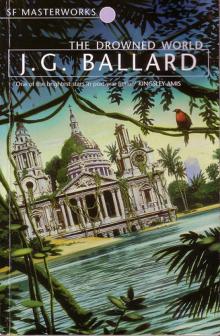 The Drowned World
The Drowned World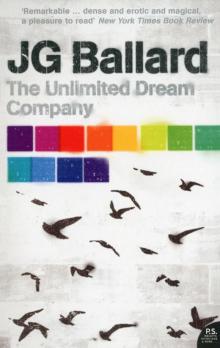 The Unlimited Dream Company
The Unlimited Dream Company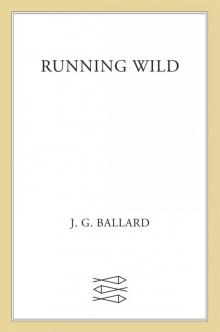 Running Wild
Running Wild The Day of Creation
The Day of Creation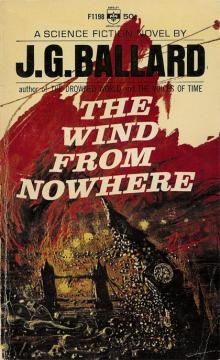 The Wind From Nowhere
The Wind From Nowhere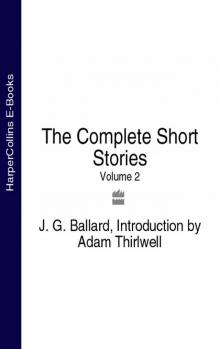 The Complete Short Stories, Volume 2
The Complete Short Stories, Volume 2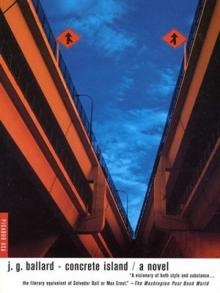 Concrete Island
Concrete Island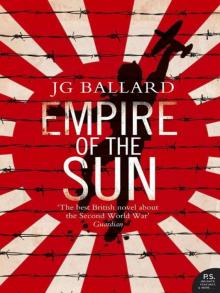 Empire of the Sun
Empire of the Sun The Kindness of Women
The Kindness of Women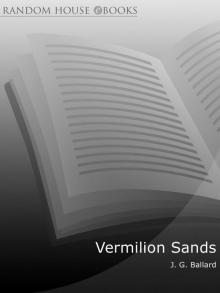 Vermilion Sands
Vermilion Sands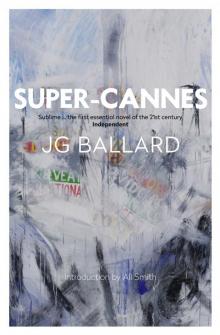 Super-Cannes
Super-Cannes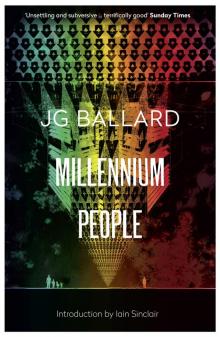 Millennium People
Millennium People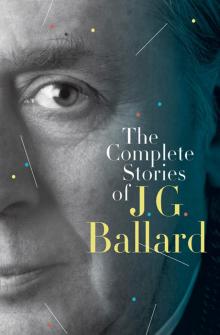 The Complete Stories of J. G. Ballard
The Complete Stories of J. G. Ballard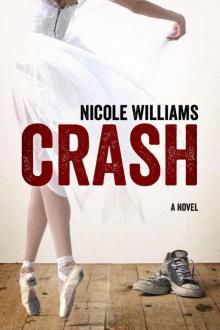 Crash
Crash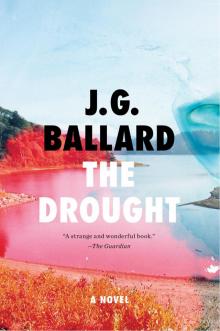 The Drought
The Drought The Atrocity Exhibition
The Atrocity Exhibition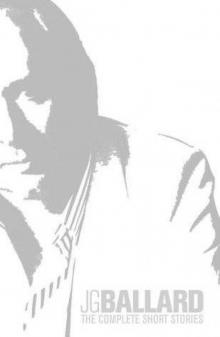 The Complete Short Stories: Volume 1
The Complete Short Stories: Volume 1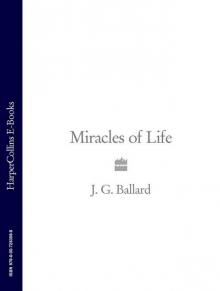 Miracles of Life: Shanghai to Shepperton: An Autobiography
Miracles of Life: Shanghai to Shepperton: An Autobiography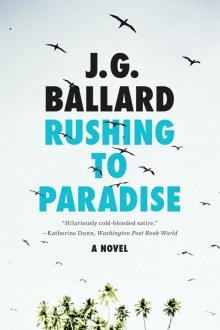 Rushing to Paradise
Rushing to Paradise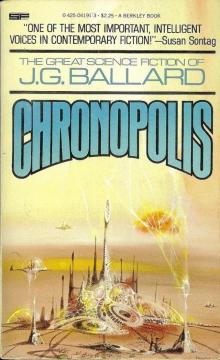 Chronopolis
Chronopolis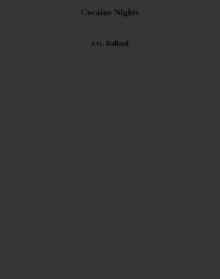 Cocaine Nights
Cocaine Nights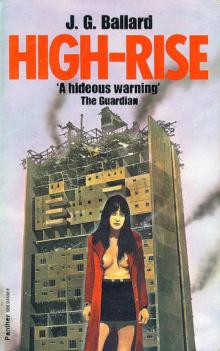 High Rise (1987)
High Rise (1987)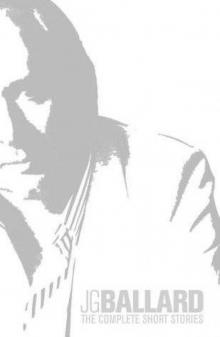 The Complete Short Stories
The Complete Short Stories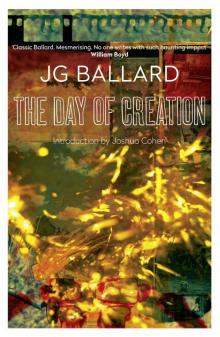 The Day of Creation (Harper Perennial Modern Classics)
The Day of Creation (Harper Perennial Modern Classics)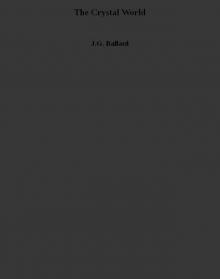 The Crystal World
The Crystal World